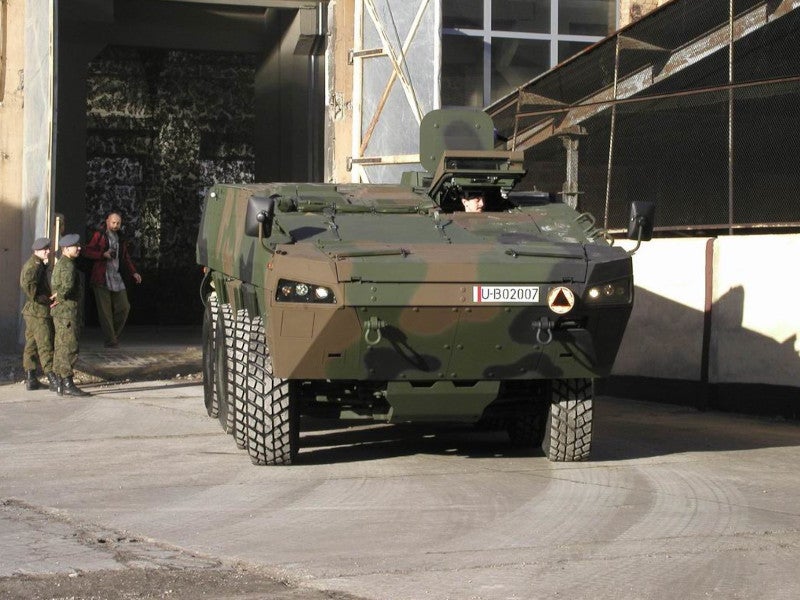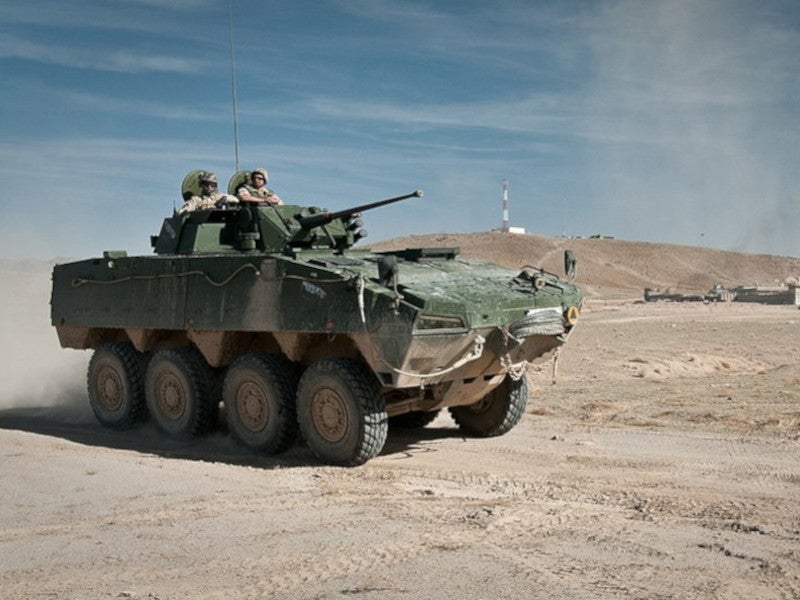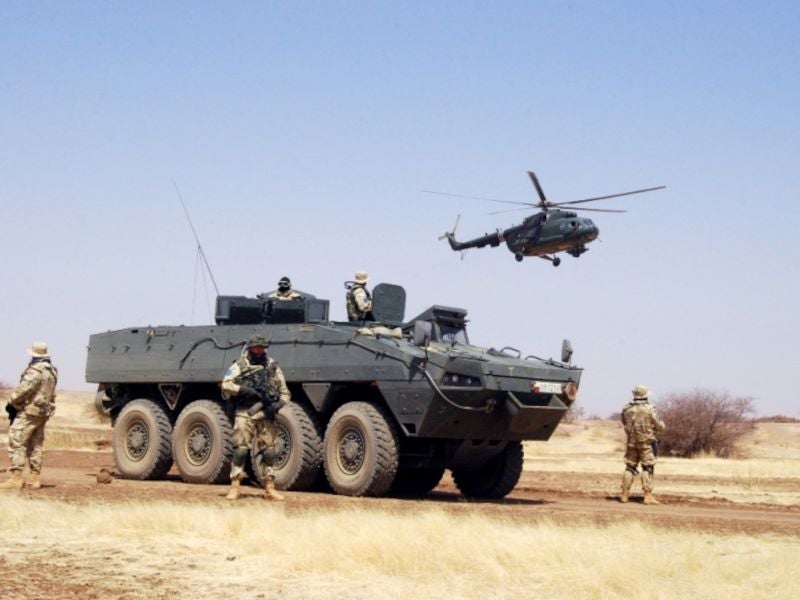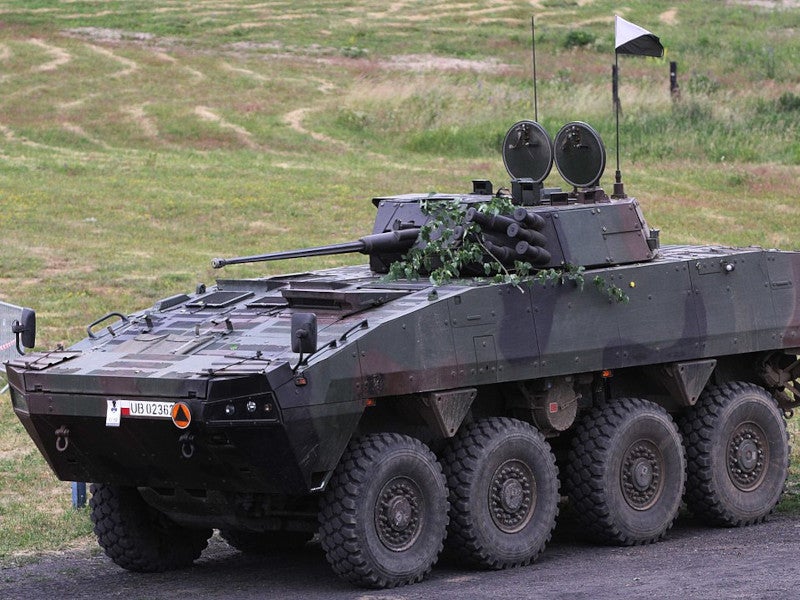The Kolowy Transporter Opancerzony (KTO) Rosomak armoured modular vehicles (AMV) are developed by Rosomak, a company within the Polish Armaments Group, for the Polish Armed Forces.
The Rosomak 8×8 AMV is the latest generation vehicle built on the company’s modern concept and is designed to meet the requirements of the battlefield.
Finnish defence and security services provider Patria won a contract to supply KTO Rosomak vehicles to the Polish Army in collaboration with Rosomak in 2002. Both companies joined forces with OTO Melara, a weapons platform manufacturer, to develop the vehicles.
The initial agreement was signed for 690 vehicles across ten different variants. The initial pre-series vehicles were manufactured in Finland while the main series production took place locally in Poland with deliveries occurring between 2004 and 2013.
Rosomak announced the implementation of the Midlife Upgrade (MLU) programme for the Rosomak vehicles in September 2022 to extend the vehicles’ lifespan.
The MLU programme consists of three components – MLU 1, which extends standard vehicle resurfacing by ten years; MLU 2, which brings significant improvements to vehicles at the programme level; and MLU 3, which focuses on creating vehicles from scratch.
Poland received an order for 100 Rosomak armoured personnel carriers (APC) from Ukraine in April 2023. The vehicles are produced at the company’s facility in Siemianowice Slaskie. The Rosomak APCs entered service with the Armed Forces of Ukraine in August 2023.
Rosomak vehicles development timeline
The Patria Technology Transfer Poland project was initiated in 2003 to transfer manufacturing data and expertise to Rosomak and its employees. The production facilities in Siemianowice were completely modernised to meet industry quality standards.
The contract between Patria and Rosomak was structured to ensure the localisation of the vehicle by using local materials and components produced by domestic companies, which was also known as ‘Polonization’.
Rosomak acquired the manufacturing technology for the Patria armoured modular vehicle and made several subcontractor deals during the same period.
The Polish Armed Forces received the first domestically produced Rosomak IFV vehicles from Siemianowice between 2005 and 2008.
By 2009, several Rosomak vehicles were consistently deployed in Afghanistan, Chad, and the Central African Republic.
The extent of Polonization deepened by 2012, with the transporter comprising 94% of the value, achieved through the participation of more than 120 local companies in the supply chain.
Rosomak and Patria signed agreements to expand KTO Rosomak production in Poland, adding 200 additional vehicle units in different variants between 2013 and 2017.
Poland produced approximately 900 Rosomak vehicles in various versions by 2023. The production and collaboration between Patria and Rosomak is still going strong despite the conclusion of the Patria technology transfer in 2005.
Rosomak armoured modular vehicle design and features
The Rosomak 8×8 AMV is 7.9m long, 2.8m wide and 2.5m high. It weighs between 16,000kg and 26,000kg.
Its operating range is between 500km and 700km. The maximum swimming speed is 10km/h, while the maximum speed is 100km/h.
The Rosomak AMV provides flexible modularity that allows for easy adaptation to various roles. The vehicle’s hydro-pneumatic, modern suspension makes it easy to adapt to various driving conditions quickly.
Its other features include frame construction of the chassis, a large carrying capacity enabling integration with large-calibre weapon systems, a spacious crew compartment, and flexible adaptation of different ballistic protection according to the user’s requirements.
Variants of the Rosomak 8×8
The Rosomak 8×8 wheeled infantry fighting vehicle features a 30mm Hitfist turret and can carry six to eight infantry soldiers, along with a gunner, commander, and driver.
The International Security and Assistance Force (ISAF) variant of the Rosomak 8×8 is designed for combat and is equipped with a Hitfist 30mm turret. It can transport six infantry in the rear crew compartment, along with a gunner and a commander.
The Rosomak AMV with a lightweight turret can accommodate either a 12.7mm or 7.62mm machine gun and a 40mm grenade launcher.
The Rosomak 8×8 armoured personnel carrier (APC) serves as the base for the 120mm Rak mortar system, while the Rosomak-S AMV is designed to transport and launch SPIKE anti-tank guided missiles.
The Rosomak Technical Reconnaissance Vehicle (APC-TRV) was developed to aid military units that operate the Rosomak AMV.
The Medevac version of the Rosomak is constructed using the Rosomak 8×8 AMV chassis. It is equipped with essential medical supplies to treat injuries and sustain basic life functions. Medevac ISAF is another variant.
The Rosomak 8×8 wheeled APC for driver instruction is specifically designed for training drivers who are seeking permits to operate the AMV.
Contractors involved
The development and manufacturing of the Rosomak vehicles involved several local contractors, including Lotos Oil, an oil company; Radmor, a radio communication equipment manufacturer; Mechanical Works Tarnow, a defence company; Scania Poland, a diesel engines provider; and Bosch Rexroth Poland, an automation solutions provider.
Stomil, a tyre manufacturer, Borimex, an advanced products and components provider, Darekon, an electronic solutions provider, WZM, a technical support provider for tank platforms, and HSJ, a steel products manufacturer, are some of the other contractors involved.
In addition, Finnish precision machining parts manufacturer Komas and Iskra, an electronics and automation solutions provider based in Slovenia, are also involved in the development of the vehicles.







